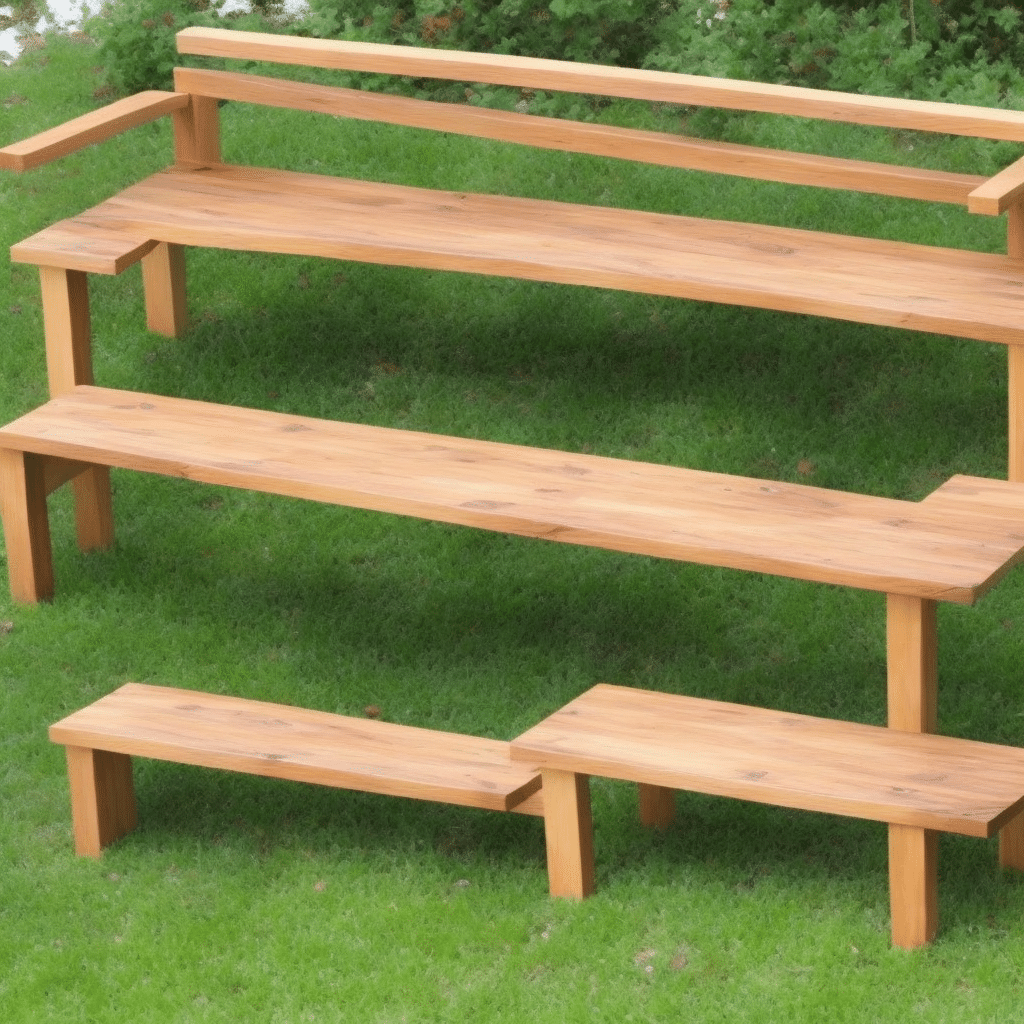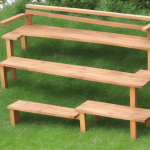The sun is setting, the birds are chirping, and you long for an outdoor space to unwind and enjoy the peace of your garden. What better way to enjoy this tranquility than from the comfort of a bench you’ve handcrafted yourself? Today, we will be discussing how to create a simple, yet attractive, DIY patio bench. This is a project perfect for those who have a taste for rustic, wood-based designs and a desire to add a personal touch to their garden.
Planning Your DIY Patio Bench
Before you dust off your toolset, we must first plan. Look at the space available in your garden and decide on the scale of your bench. Will it seat two people comfortably, or do you need a larger one for family gatherings? Equally important is to ensure that your bench complements the overall design and aura of your garden.
Lire également : How to Create a Drought-Resistant Landscape in Your Backyard?
Make a sketch of your bench, with specific dimensions annotated. This will serve as your blueprint throughout the project. Typically, a patio bench is about 18 inches tall, 12 inches wide, and the length can vary depending on your preference.
Now, make a list of the materials you’ll need. The primary material will be wood. Opt for cedar, redwood, or pine, as these are durable and resistant to rot. Additionally, you will need wood screws, sandpaper, a saw, drill, and a wood sealer or stain to protect your bench from the elements.
Sujet a lire : What’s the Best Way to Incorporate LED Lighting in Bedrooms?
Cutting and Building the Wooden Frame
Your DIY bench project begins with cutting the wood. Measure twice and cut once is the golden rule here. Depending on your bench design, you will need to cut pieces for the seat, backrest and legs. Remember, safety first. Always use the appropriate gear when cutting wood to avoid any accidents.
Once your pieces are cut, start building the frame of the bench. The frame is essentially the skeleton of the bench that provides support and structure. It comprises of the legs and the long boards that will later support the seat and backrest.
To build the frame, place the legs at the desired width apart, and screw the long boards to the top and bottom of them. Make sure the screws are tight and the frame is sturdy before proceeding to the next step.
Assembling the Bench
Now that we have a sturdy frame, let’s focus on the seat and backrest. The seat consists of several boards laid side by side on the frame. The trick here is to leave a tiny gap between the boards to allow for the wood to expand and contract with temperature changes. Screw these boards into the long boards of the frame.
Next, attach the backrest. This can either be a single piece of wood, or like the seat, a series of boards. The angle of the backrest is essential for comfort, a slight recline of about 5 degrees is recommended.
Once the bench is assembled, give it a good sanding to smooth out any rough edges or splinters. This is also a good time to round off the edges of the seat and backrest, adding a touch of style and comfort to your bench.
Finishing Touches: Staining and Sealing
The final step towards completing your DIY bench is the application of a stain. The stain serves a dual purpose. First, it enhances the natural beauty of the wood, adding depth and character to the grain. Second, it acts as a protective layer shielding the wood from the sun’s UV rays, rain, and snow.
Before applying the stain, make sure the bench is clean and free from dust. Apply the stain with a brush, moving in the direction of the grain. Wait for it to dry before deciding if you want another coat, as the wood will darken with each application.
After the stain has dried, seal the wood with a clear wood sealer. This adds an extra level of protection from moisture and prevents the stain from fading.
Caring for Your DIY Patio Bench
Your simple and attractive DIY patio bench is now ready to grace your garden. However, the responsibility of ownership doesn’t stop at building. Ensure that your bench lasts for many seasons by caring for it properly.
Regularly sweep off leaves, dirt, and other debris that can trap moisture and result in mold or mildew. Reapply the stain and sealer as needed, usually every two to three years. If possible, store your bench in a shed or garage during harsh winter months.
Incorporating a DIY bench into your outdoor space not only provides a comfortable and stylish seating option, but it also gives you the satisfaction of creating something with your own hands. So, grab your tools, roll up your sleeves, and let’s turn this plan into a reality.
Making the Most of Your DIY Patio Bench
Now that you’ve built your beautiful, handcrafted outdoor bench, it’s time to make the most of it. Place it in a spot that offers a good view of your garden, preferably under the shade of a tree or a patio umbrella to protect it and its future occupants from the sun. Consider adding outdoor cushions for added comfort and style.
Your new garden bench also offers a great opportunity to create a cozy outdoor space. Consider adding a small side table or a fire pit nearby, making your garden bench the perfect spot to enjoy a cup of coffee in the morning or roast marshmallows at night. Create a surrounding garden with colorful flowers or lush green plants that will add to the image credit of your outdoor space.
The possibilities for making the most of your DIY bench are endless. It’s your bench, built by your hands, so don’t shy away from getting creative and making it your own.
Conclusion: The Joys of DIY
Building your own bench may seem daunting at first, but with these bench plans in hand, the task becomes simple and enjoyable. This is the beauty of DIY – it allows you to create something you truly love, while simultaneously providing a sense of accomplishment.
This DIY garden bench is more than just an outdoor seating option; it’s a testament to your creativity and craftsmanship. It’s a project that can be customized to your liking, making it a true reflection of you. It is a tangible reminder of your dedication and hard work, something that you can look at and say, "I made that."
Remember, these bench plans are merely a guide. Feel free to tweak them according to your preferences and needs. Want a larger corner bench for social gatherings? Or maybe you prefer a smaller, intimate bench for quiet evenings? The choice is yours.
Building a DIY bench is not just about creating a piece of furniture; it’s about creating memories. It’s about the journey as much as it is about the result. It’s about learning new skills, overcoming challenges, and experiencing the joy of turning a pile of wood into a beautiful, functional, and durable piece of art.
So, whether you’re a seasoned DIY-er or a novice looking to dabble in a new hobby, we hope this guide has inspired you to roll up your sleeves, pick up that saw and wood glue, and build a bench that you can be proud of.
And remember, the next time you’re out in your garden, sitting on your hand-built bench, taking in the beauty of your outdoor space – take a moment to appreciate the work you’ve put in. After all, you’ve earned it.










